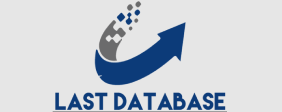Tracking user behavior is a crucial component of successful retargeting strategies in the realm of digital marketing. In a landscape where consumers are inundat with information and choices, retargeting provides a powerful means to re-engage potential customers who have previous shown interest in a product or service. Understanding and analyzing E-Commerce Photo Editing user behavior not only enhances the effectiveness of these strategies but also helps to built personaliz and relevant interactions, fostering a more profou connection between bran and consumers. At the heart of retargeting lies the concept of recapturing lost opportunities. Many users browse websites, view products, and even add items to their carts, but often leave without completing a purchase. Tracking their behavior, such as pages visited, products view, and time spent on site, enables marketers to create tailor campaigns that address the specific stage of the consumer’s journey. By identifying these gaps them and ultimately guide them towards conversion.
Tracking user behavior
User behavior tracking allows for a granular understanding of preferences and intentions. Metrics like click-through rates, bounce rates, and conversion rates provide insights into which products or services resonate the most with a particular audience. This information aids in segmenting users based on their behaviors, enabling marketers to craft highly personalized retargeting messages. For instance, a user who abandoned a cart might be retargeted with a discount offer, while a user who browsed a specific product category could receive relevant product recommendations. This level of personalization increases the chances of users engaging with retargeted content, as it aligns with their demonstrated interests. Furthermore, analyzing user behavior patterns assists in refining retargeting strategies over time. By identifying trends in consumer interactions, marketers can optimize ad placement, messaging, and timing. For instance, if a user tends to convert after seeing a retargeting ad within a specific timeframe, marketers can adjust their accordingly.
This level of personalization
This iterative approach, driven by data insights, ensures that retargeting efforts become increasingly effective and efficient. In the era of heightened privacy concerns, transparent communication about data collection and usage is paramount. Marketers must adhere to ethical standards and ensure that user data is handl responsibly. Respecting user privacy not only builds trust but also ensures the sustainability of retargeting Book Your List strategies in the long run. In conclusion, tracking user behavior is a cornerstone of successful retargeting strategies due to its ability to drive personalization, relevancy. By leveraging insights gleaned from user actions, marketers can create potential customers. Guide them along the purchasing journey, and foster stronger brand-consumer relationships. This practice not only maximizes conversion rates but also exemplifies the power of data. As digital landscapes continue to evolve, harnessing the potential of user behavior.







